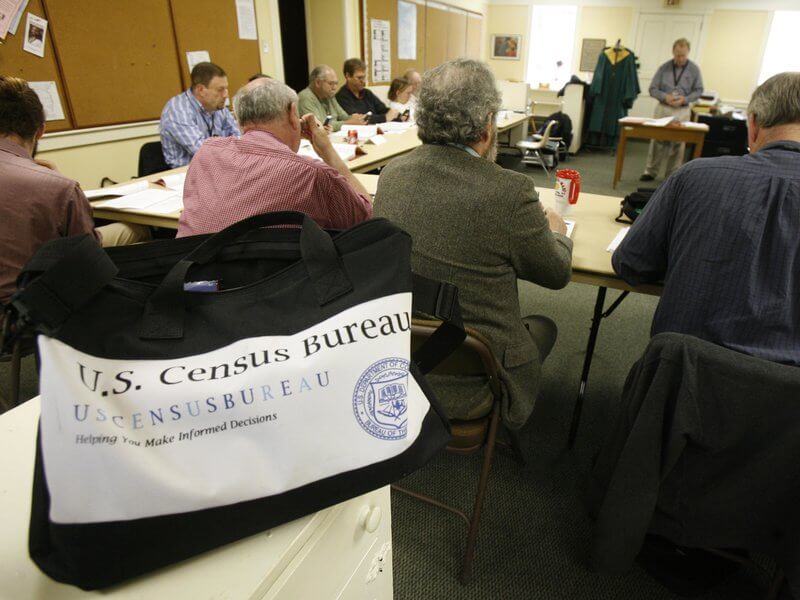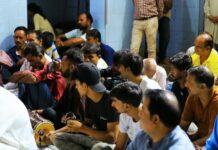
While state has made progress with “hard-to-count” populations, results so far show the rest of California needs to respond
India Post News Service
SACRAMENTO:– While the California Complete Count – Census 2020 Office (Census Office) has been blanketing the state with multilingual appeals to encourage hard-to-count populations to fill out their 2020 census forms, an analysis of the response data released Monday (03 August) shows that many other Californians – including those on the Westside of LA and San Francisco – still need to do their part if the state is going to achieve the same success it had in 2010.
“The Census is important for everyone. We need all Californians to do their part. We’re calling on all Californians to take the Census by Friday (07 August) – our Get Out the Count Day, since efforts will begin shifting away from self-response. It’ll take all of us to reach an accurate and complete count,” said Ditas Katague, Director of the California Complete Count – Census 2020 Office.
Some important points, as of July 30, 2020:
- Only four states have a current self-response rate above their 2010 SRR: Washington, Nevada, Michigan and Kentucky
- An estimated 9.7 million California households have already taken the Census, of those, 2 million are hardest-to-count.
- California has had most households respond to the Census compared to other states.
- California has the highest average self-response rate (SRR) in census tracts where the foreign-born represent a higher-than-median share of the tract’s population.
- When compared to 10 other states with similarly high racial and ethnic diversity, California’s self-response rate is a national leader, only surpassed by Maryland and New Jersey, which have much smaller overall populations. • California’s SRR exceeds that of other large states, such as Florida (59.9 percent), New York (58.5 percent) and Texas (57.8 percent).
- California’s self-response rate is above the national average – 64.1% versus 62.8%, respectively.
- The final participation rate in 2010 for California was 68.2% vs.. 66.5% nationally.
Data Showing Differences in Response in Neighborhoods Compared to 10 Years Ago in Communities like Beverly Hills and San Francisco’s Cow Hollow
In looking at the data, the Census Office noticed a trend – some areas that have been historically easier-to-count are responding at lower rates than normal.
Take as an example the response rates in Los Angeles, there are low response rates spanning from Malibu, through Beverly Hills and West Hollywood and into Studio City. Even though some of these cities were far below the California statewide self-response rate in 2010, the current about 36.0 percent response rate in parts of Malibu and the over 20-percentage point gap from 2010 is unprecedented.
Also, in San Francisco, several hard-to-count tracts in the Bay Area still have a long way to go to meet their 2010 self-response rates (a mile marker measurement used nationwide). But seeing tracts in the Marina, Cow Hollow, Pacific Heights and Presidio neighborhoods register at about 53 percent Census participation was surprising, particularly when response rates in many of these areas exceeded 70 percent in 2010. There is a nearly 20-point lag among these San Francisco neighborhoods.
It’s a similar scenario in other parts of the state including the enclaves of Newport Beach and Carmel-by-the-Sea.
2 Million HTC Households
As part of its original strategy, the Census Office focused its outreach on California’s estimated 3.5 to 4.1 million hardest-to-count households, with a target of reaching at least 2 million hardest-to-count households to respond to the Census.
So far, California has reached 2 million of those hardest-to-count households and continues to aim to reach as many as possible as the U.S. Census Bureau begins its in person follow up enumeration.
These households – including people who don’t have broadband Internet access, speak English as a second language and live at or near the poverty line – are a priority because they are at an even greater risk of being missed in this Census.
Of the 9.7 million California households that have responded to the Census, two million of those are considered among the hardest-to-count.
California’s self-response rate is above the national average – 64.1% versus 62.8%, respectively (as of July 30).
In-Person Census Work
The U.S. Census bureau typically begins counting non-responders by sending Census takers into neighborhoods to go door-to-door and tally residents. Known as, Non-Response Follow-Up (NRFU), this operation starts on August 11.
The California Census campaign is looking at lower-responding areas and what can be done to increase those numbers during this period. California’s strategy was built to complement the work done by the U.S. Census Bureau, encouraging the hardest-to-count populations to complete the Census. The state has adjusted along the way due to federal operational adjustments and the current pandemic.
For more information about the U.S. Census Bureau’s NRFU operation, including how to identify an official Census taker, please click here.
The campaign continues to remind all Californians that they can respond to the Census online at https://my2020census.gov, by phone at 844-330-2020 (a list of in-language options is available here), or by mail if they received a paper form.
The California Complete Count – Census 2020 Office Once each decade, the U.S. Census Bureau attempts to count every person in the United States. California leaders have invested $187.2 million toward a statewide outreach and communication campaign. For more information, please go to https://californiacensus.org/.
DATA: To see data on the hard-to-count populations in cities, counties, congressional and legislative districts in California, please visit: https://cacensusreporter.azurewebsites.net/responses.html






